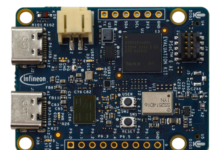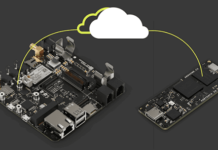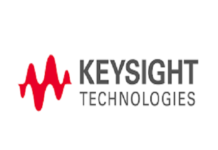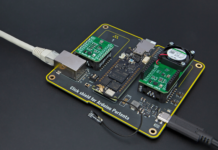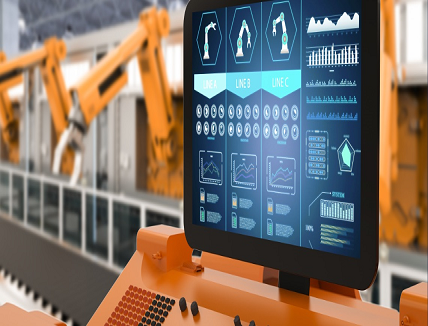
ST just announced the OEM launch of the STM32MP2, our first 64-bit microprocessor, thanks to a Cortex-A35 that will enable teams to future-proof their design. The new series will also be our first MPU to include a neural network processing unit (NPU), a new GPU, and new peripherals like three Gigabit Ethernet ports with time-sensitive networking support (TSN). An OEM launch means that original equipment manufacturers are starting to get samples. Consequently, if all goes well, we expect general sampling to begin at the end of the year and mass production by the second quarter of 2024 for both devices and development boards.
The new trends on the horizon
Thinking about computing architectures 10 years into the future
While makers of consumer products can often expect their end users to buy a new model every few years, manufacturers of industrial or niche applications, like medical devices, don’t have the same luxury. In many instances, a programmable logic controller, an HMI, or a hospital appliance must be operational for a decade, if not longer. As a result, engineers building those systems must create something robust and ensure their products will still be serviceable in ten years. Along with a Long-Term Support commitment for at least ten years, ST also collaborates with key partners to ensure that all system components can easily be sourced for more than a decade.
The inevitable march toward 64-bit
Along with the need to create long-term solutions, engineers are tackling new applications that rest on data analytics or AI, among others. Those systems are far more memory-intensive and often run on operating systems and software packages that require 64-bit architectures. Indeed, while industrial applications aren’t dramatically impacted by this trend yet since many industrial applications still run on 32-bit cores, we know that certain teams already need to prepare for the next evolution. Hence, we decided to adopt the Cortex-A35, which supports both 32-bit and 64-bit runtimes, thus simplifying developments drastically.
The new solution to meet a 64-bit world
The Cortex-A35
An overview of the STM32MP2 shows that the devices will include one or two Cortex-A35, depending on the versions that will hit the market, and one Cortex-M33. While the Cortex-M will run at up to 400 MHz, the Cortex-A will reach up to 1.5 GHz. We chose this MPU because it remains the most energy-efficient and cost-effective 64-bit Cortex core today. It is also backward compatible with 32-bit architectures, so users can run legacy code as if on our previous generation of devices. Astute readers will also notice some similarities with the STM32MP13, our most affordable and fastest single-core MPU when it comes to certain peripherals or security features.
The new STPMIC25
As is customary with ST, we took the opportunity of this new architecture and the move to a new process node to create new power-saving schemes and a new power management IC (STPMIC25). The Cortex-A35 has greater current needs to address new power modes and greater dynamic switching. It was thus important to help engineers take advantage of them while ensuring they can optimize their design. According to our evaluations, using the STPMIC25 also lowers the bill of materials by about 30% compared to using discrete components. Put simply, the STM32MP2 continues to lower the barrier to entry into the world of microprocessors and Embedded Linux.
The new applications around AI, graphics, computer vision, and more
The new NPU
The STM32MP2 is future-proofing applications by providing a neural network accelerator. Machine learning already has a strong footing on the STM32MP1. Since the launch of our MPU, we’ve run numerous presentations using a machine learning algorithm, such as object recognition or people counting demos. Members of the ST Partner Program, like Siana Systems, even released modules with the STM32MP1 dedicated to AI applications relying on computer vision, like the MPCam. Finally, ST provides an expansion package, X-LINUX-AI, to facilitate the development of edge AI applications. Hence, the presence of an NPU in the STM32MP2 capable of reaching up to 1.35 tera operations per second (TOPS) is not surprising.
Yet, the STM32MP2 is highly symbolic because its NPU vastly differs from the one found on the STM32N6, which we showed at Embedded World 2023. It thus testifies to our desire to tailor our solution to various markets. Given our time and investments into our MCUs, some may ask why we didn’t use one NPU everywhere. The reason is that our customers choose our STM32 microcontrollers for very different applications than those serviced by our MPUs. Consequently, we decided to provide different NPUs for each device category to better serve the algorithms they will run.
The new GPU
Another architectural update to the STM32MP2 is the presence of a new GPU capable of supporting 1080p graphics. Concretely, products can use a small screen, like a 5.5-inch display, and support a high pixel density (401 pixels per inch or PPI) for much sharper UIs. Additionally, the GPU also supports Vulkan, coined the “next generation OpenGL initiative” by the Khronos Group, thus further future-proofing devices that will rely on the graphical framework. Vulkan also opens developers to Android applications, making porting one program onto multiple devices easier.
The new peripherals
As the STM32MP2 gets closer to mass availability, we will update this blog post to provide more information on its architecture. Today’s goal was to provide a clearer path to what engineers can expect industrial applications to look like in 10 years and how the STM32MP2 can help them get there. We can share that the device will have a MIPI CSI-2 camera interface for streamlining computer vision applications. We also support three CAN-FD interfaces and all the security features to enable a path toward a SESIP Level 3 certification.
What will the transition from the STM32MP1 to the STM32MP2 look like?
While waiting for the release of the first STM32MP2 development boards next year, engineers can already work on the STM32MP1 and learn from its ecosystem. Indeed, by the time the new device is out, we’ll have updated our OpenSTLinux distribution and software expansion packages to support the new 64-bit architecture. Moreover, the STM32MP2 still remains compatible with 32-bit applications and DDR3 memory. Consequently, designers can work on a system now and more easily transition to the next generation of devices. Put simply, the STM32MP2 will stand on the shoulders of its big brother to make sure the industry can better plan ahead and adopt a larger vision.
For more information visit ST Blog Here.






